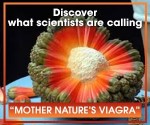
➜ Eating a mermaid, dog food and much more!
➜ Welcome to Klunatik`s official COMPILATION channel!
Here we create compilations from videos from our MAIN channel and give more background information concerning the making of these videos (put on subtitles for background information)
➜ Check our MAIN channel for more context en to see our latest videos: https://www.youtube.com/user/klunatik (© all rights reserved)
Hi, I’m Kluna and together with my venus flytrap we eat funny/absurd meals like: mermaids, sand, slime and much more!
For more context please go to our main channel: https://www.youtube.com/user/klunatik
WARNING: Eating is NOT real, DON’T try this at home!
Follow us for here EXCLUSIVE material:
➜ Facebook – https://www.facebook.com/klunatik
➜ Twitter – https://twitter.com/klunatikk
➜ Business enquiries: charlietheflytrap@gmail.com
I also ate slime pizza, bricks and cement, dog food, a play doh burger, fried pencils, a plastic grill with toys.
Autonomous sensory meridian response (ASMR) is a euphoric experience characterized by a static-like or tingling sensation on the skin that typically begins on the scalp and moves down the back of the neck and upper spine, precipitating relaxation. It has been compared with auditory-tactile synesthesia.Autonomous sensory meridian response (ASMR) signifies the subjective experience of ‘low-grade euphoria’ characterized by ‘a combination of positie feelings, relaxation, and a distinct static-like tingling sensation on the skin’.It typically begins ‘on the scalp’ before moving ‘down the spine’ to the base of the neck, sometimes spreading ‘to the back, arms and legs as intensity increases’, most commonly triggered by specific acoustic and visual stimuli including the content of some digital videos, and less commonly by intentional attentional control.
The Venus flytrap (also referred to as Venus’s flytrap or Venus’ flytrap), Dionaea muscipula, is a carnivorous plant native to subtropical wetlands on the East Coast of the United States in North Carolina and South Carolina. It catches its prey—chiefly insects and arachnids—with a trapping structure formed by the terminal portion of each of the plant’s leaves, which is triggered by tiny hairs on their inner surfaces.
Halloween activities include trick-or-treating (or the related guising), attending Halloween costume parties, decorating, carving pumpkins into jack-o’-lanterns, lighting bonfires, apple bobbing and divination games, playing pranks, visiting haunted attractions, telling scary stories and watching horror films. In many parts of the world, the Christian religious observances of All Hallows’ Eve, including attending church services and lighting candles on the graves of the dead, remain popular,[20][21][22] although elsewhere it is a more commercial and secular celebration.[23][24][25] Some Christians historically abstained from meat on All Hallows’ Eve,[26][27] a tradition reflected in the eating of certain foods on this vigil day, including apples, potato pancakes and soul cakes.[27][28][29]
Trick-or-treating
A mermaid is a legendary aquatic creature with the head and upper body of a female human and the tail of a fish.[1] Mermaids appear in the folklore of many cultures worldwide, including the Near East, Europe, Africa and Asia. The first stories appeared in ancient Assyria, in which the goddess Atargatis transformed herself into a mermaid out of shame for accidentally killing her human lover. Mermaids are sometimes associated with perilous events such as floods, storms, shipwrecks and drownings. In other folk traditions (or sometimes within the same tradition), they can be benevolent or beneficent, bestowing boons or falling in love with humans. merman male





























































